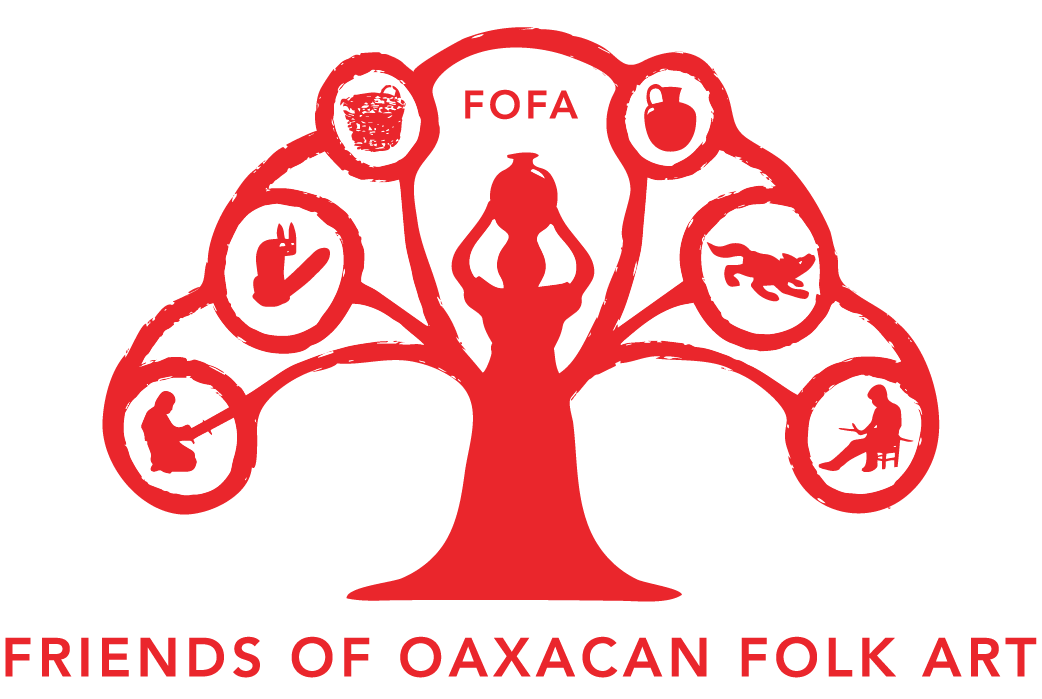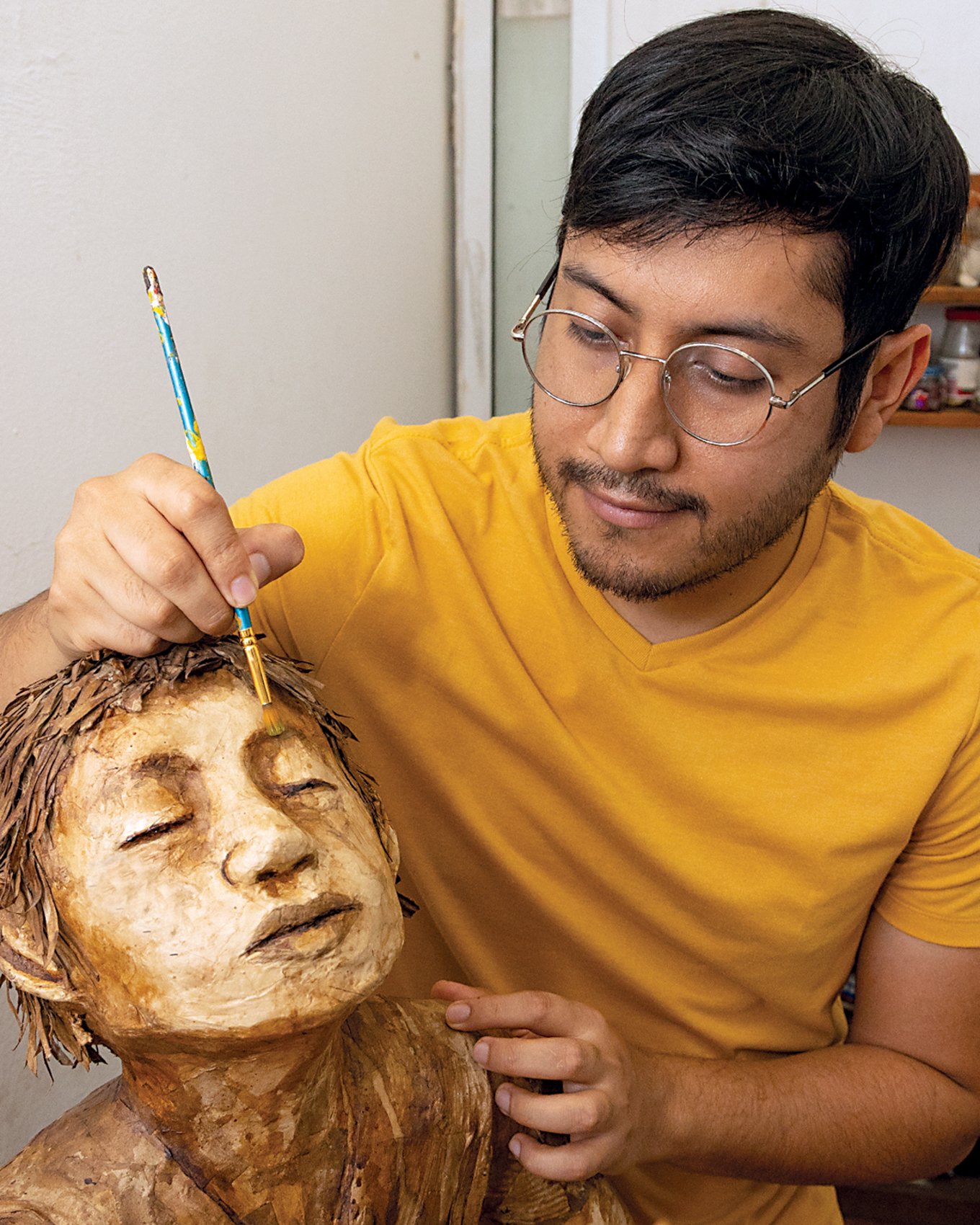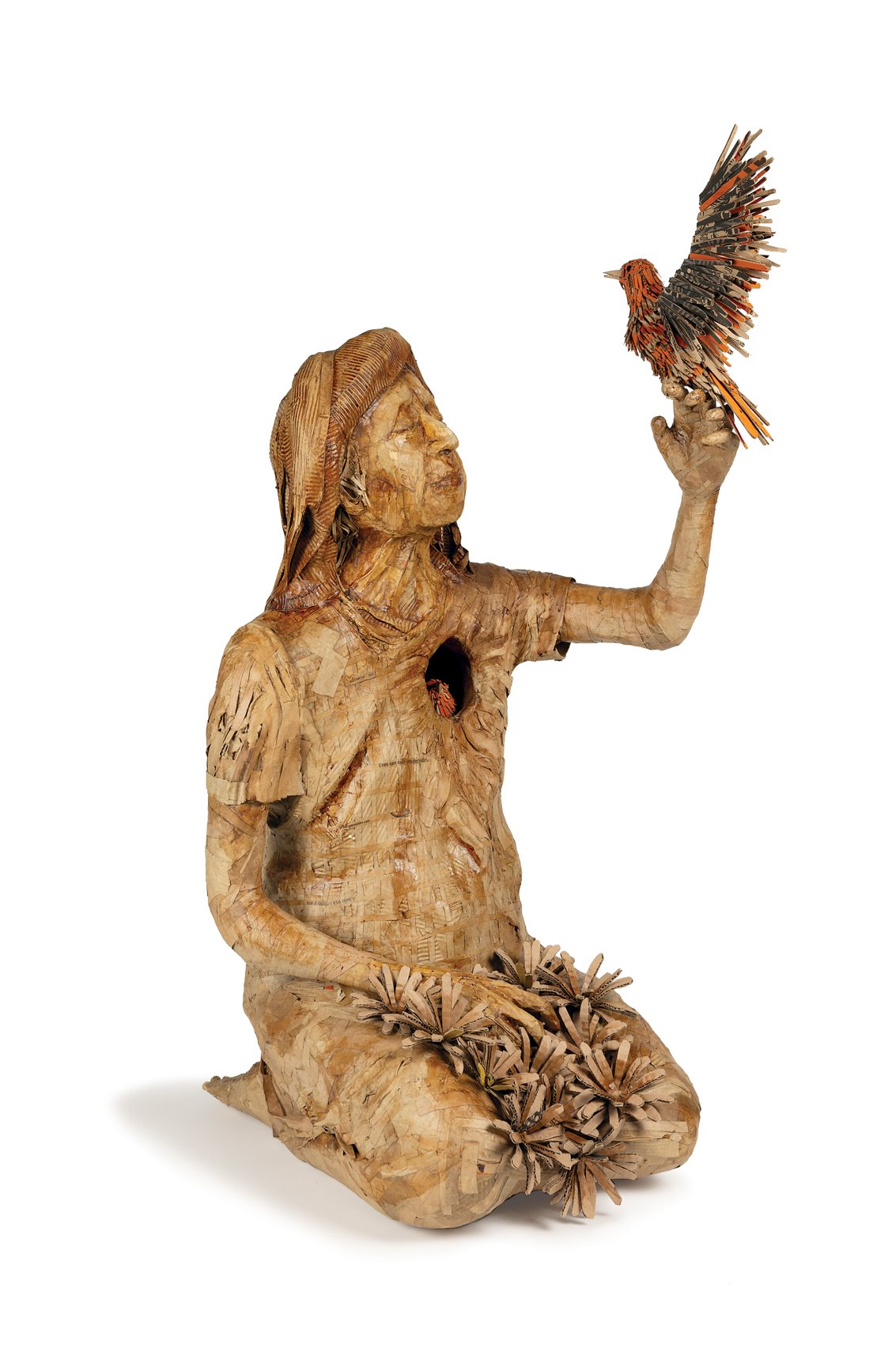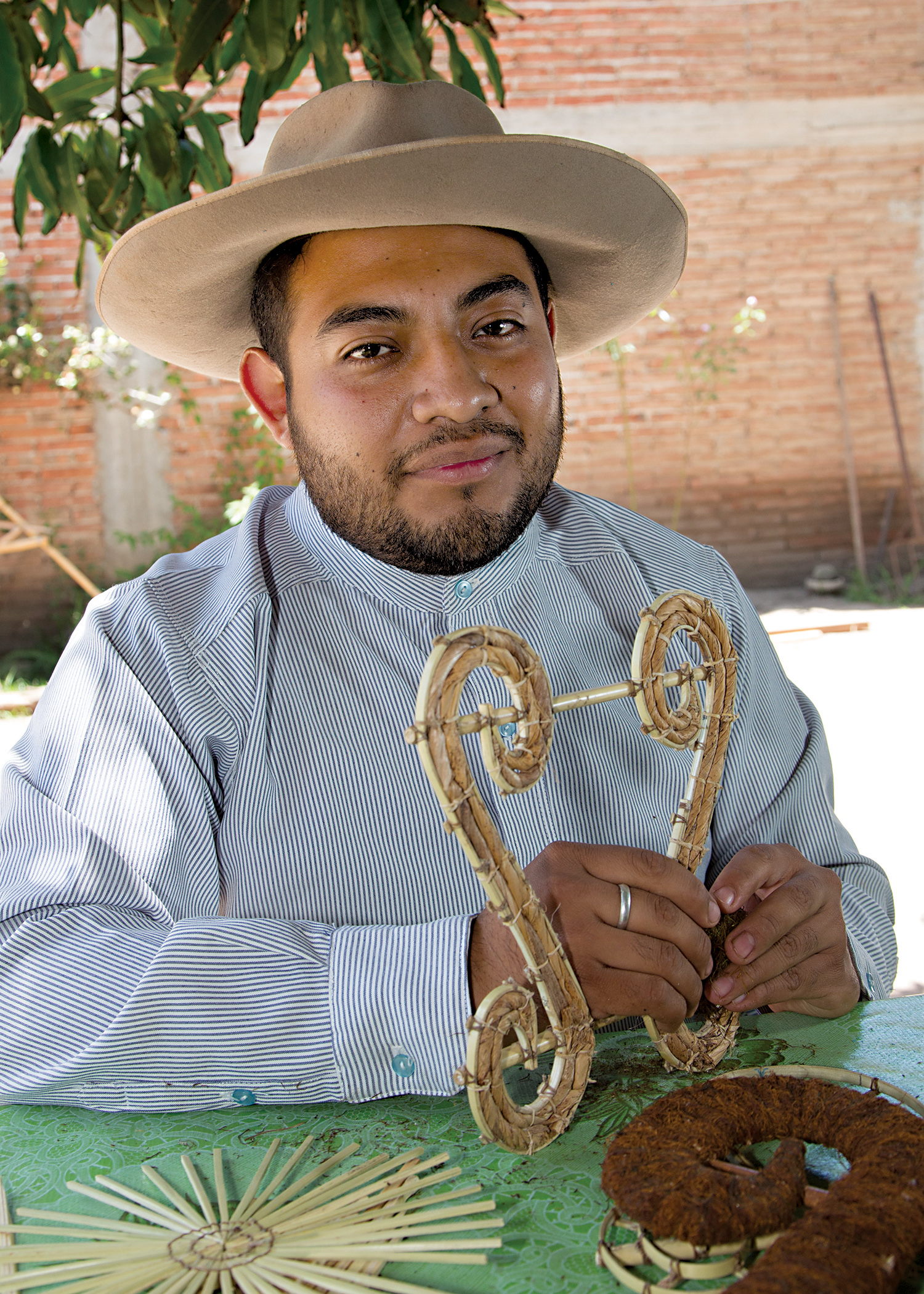MEET THE ARTISTS / PAPIER MÂCHÉ & RECYCLING/MIXED MEDIA
PAPIER MÂCHÉ &
RECYCLING/MIXED MEDIA
The ArtisTS
Papier Mâché
Papier mâché is a craft that was not indigenous to this area. Pedro Linares (1906-1992), a papier mâché craftsman from Mexico City, brought recognition to this art form. It is said that, after an anthropologist brought one of his figures to Oaxaca to be executed in woodcarving, the idea was adopted by many artists. There has been increasing interest in the medium of papier mâché as one form of recycling, and some artists have taken recycled art a step further by adding organic materials, such as mango skin or seed pods.
Jesús Canseco Zárate
[Winner in “Other Modalities,” FOFA’s 2008 contest; Honorable Mention in “Other Modalities,” FOFA’s 2011, 2013, 2022 contests]
La Carbonera #804, Oaxaca Centro 68000
(To call from US, first dial 011-52)
Tel celular • Cell phone: 951-408-9550
Email: chuchocaza@gmail.com
Instagram: @cazaskeletons
Jesús has always loved art, filling his home with his experiments in different materials until he discovered papier mâché. He has dedicated himself to the Day of the Dead figure called the calaca, or skeleton, a typical Mexican folk art image that playfully pokes fun at the after-life. Jesús renders them with a variety of gestures, shapes and colors, while preserving their culture and tradition. When he was nineteen, Jesús won first prize in the category varios (other modalities) in FOFA’s 2008 young artists competition with his papier mâché figure “Catrina.” The judges noted that Jesus’s Catrina was both elegantly dressed and delightfully sculpted to capture a sense of movement.
Pedro Mendoza Ortega
[Honorable mention, FOFA 2008, 2011 contests]
Pueblo of San Martín Tilcajete
Privada del Carrizal #1
tyrane699@hotmail.com
(From US) Cell: 011-52-951-115-8354
(In Oaxaca) Cell: 951-115-8354
Pedro, who is university educated and facile with social media, encourages young people to recognize the profound importance of their cultural roots. While learning from artists around the world through books and Facebook, he adapts new technique to highlight ancient themes. Pedro fears that many are forgetting traditional cultural beliefs, and hopes that people who see this nahual figure – one that combines a human skull face with a jaguar head and reptile body – appreciate that it is a nahual. And for the viewer who does not recognize this traditional Oaxacan mythological character, his desire is that they will learn about such beliefs.
Magdiel Morales Reyes
Winner, FOFA’s 2011 contest
Pueblo of Santa María Atzompa
Diaz Ordáz #107
(From US) Landline: 011-52-951-558-9143
ell 011-52-951-180-3336
(In Oaxaca) Landline: 558-9143
Cell: 951-180-3336
Magdiel, who grew up in a family producing the utilitarian green glazed ceramics for which his pueblo is known, was not encouraged by his parents to work in clay. With the help of his mentor and friend, Pedro Mendoza, Magdiel and eight friends have established a community workshop in papier mâché in his yard. The meter high piece for which he placed first in the varios (other modalities) category of the FOFA 2011 young artists’ contest, is a fantasy chimera animal incorporating the feet of a rooster, the beak of a bird, and the head, legs, neck and trunk of other animals.
Humberto Ramírez Cordoba
FOFA 2011 contest
Oaxaca City
Yaga #101, Departamento 201
Fraccionamiento Alamos Montoya
beto_041439@gmail.com
(From US) Cell: 011-52-951-124-0309
(In Oaxaca) Cell: 951-124-0309
Humberto has created a China Oaxaqueña, inspired both by the song Tierra del Sol and by a delegation of dancers who participate in the traditional dance festival Guelaguetza. He hopes to convey the longing that Oaxacans feel when they are far away from home, as well as to capture the beauty of Oaxacan women, together with their culture and local traditions. He has given careful attention to detail on the figure’s skirt, face and the floral arrangement that she carries on her head. Humberto learned papier mâché while working in a well-known popular artists’ cooperative in Oaxaca where he helped create monos (large human puppets worn by people in processions).
RECYCLING/MIXED MEDIA
Antonio de Jesús Alonso Cruz
[Honorable Mention in “Other Modalities,” FOFA’s 2016, 2022 Contests]
Transformación Social #9, Manzana 72, Colonia Ricardo Magón INFONAVIT, Mártires de Oaxaca de Juárez 68025
Cell phone:
(From US) 011-52-951-192-8494
(In Oaxaca) 951-192-8494
Landline: (From US) 011-52-951-695-6409
(In Oaxaca) 695-6409
Email: quierenada@hotmail.com
Facebook: Toño Alonso
Instagram: t0n0al0ns0
Antonio, the first artist in his family, started painting very young and continues to do so, but now devotes most of his time to creating sculptures out of a variety of materials. His piece constructed entirely of waste cardboard and plastic, is a woman giving shelter to a family of birds. It was inspired by a news story about an elderly woman who died in Oaxaca’s 20 de Noviembre market, where she had spent her working life. It got him thinking about how this woman -- and so many others like her — sacrificed themselves and gave their families hope and strength to overcome difficulties.
Alfonso Carlos Canseco Pérez
[Honorable mention, FOFA 2016 contest]
Pueblo of San Antonino Castillo Velasco
Porfirio Díaz #17
alfonso.canseco.peligro@gmail.com
(From US) Cell: 011-52-951-320-2187
(In Oaxaca) Cell: 951-320-2187
Alfonso eagerly awaited the day he would ride the huge ferris wheel of his pueblo, but sadly it disappeared when he was eight. His unrealized dream is memorialized in this functional ferris wheel constructed from cane and figures of cornhusks, for which he received honorable mention in FOFA’s 2016 young artists’ competition. Trained at Oaxaca’s Bellas Artes, Alfonso is a multi-talented artist – his workshop displays his woodcuts and paintings - who creatively combines diverse materials. In 2013, inspired by his father’s cultivation of flowers and his mother’s floral baskets, he won the Night of the Radishes carving contest in Oaxaca. He has also begun constructing dramatic figures from dried flowers, a traditional craft in his village.
Danaé Guadalupe Floreán Reyes
[Honorable mention in “Other modalities,” FOFA’s 2018 contest]
Zimatlán de Álvarez
Álvaro Obregón s/n, Barrio de San Antonio
danaafr_@outlook.es
(From US) Landline: 011-52-951-571-5970
Cell: 011-52-951-362-4839
(In Oaxaca) Landline: 571-5970
Cell: 951-362-4839
Danaé, an art student at the university in Oaxaca, does not come from an artisanal family, but loved going to her village’s marketplace as a child to admire the hand-made basketry. Her fascinating piece, a hanging sculpture of totomoxtle (corn husks), commemorates how her pueblo’s agricultural traditions form the basis of its enduring strength. She describes it as follows: “At the top are our people—individuals joined together as part of our legacy. In the middle, their tools are represented by a yoke worn by farm animals. And in the lowest part are representations of the crops we grow: corn, roses and nuts.”
Isidro Manuel Javier Sernas
[Honorable mention, FOFA 2016 contest]
Pueblo of Tlacolula
Francisco Javier Mina s/n
ordisi_leunam@outlook.com
(From US) Cell: 011-52-951-120-3342
(In Oaxaca) Cell: 951-120-3342
The technique of using cane shavings to make figures and paintings began with Isidro’s great grandfather, and has been passed on to succeeding generations. He bases his work on this traditional technique, but has developed new, innovative designs. The process requires a series of steps, beginning with scraping the cane, drying the shavings in the sun, dyeing them, and sewing them onto a board created from cane and banana tree bark. The frame itself has the same base, but includes an added layer of moss. Isidro describes his painting as “two lyres dancing to the rhythm of the music.”
David Tomás Mendoza
[Honorable mention in “Other modalities,” FOFA’s 2018 contest]
Pueblo Villa de Zaachila
Cosijopii #1003, Barrio de San Sebastián
yucuannagaz@gmail.com
(From US) Cell: 011-52-951-130-7611
(In Oaxaca) Cell: 951-130-7611
David, one of very few artists in Zaachila, painted his gourd with Zapotec designs representing water, fire, wind and earth. From top to bottom, bands represent the sun and the spreading out of its rays. Three jaguars are intended to sustain the Aztec conception of the cosmos. Four cornfields can be seen: one growing, another with mature ears of corn, a third that is green, and the fourth dead and dry. David’s intention is to portray the life and death of the golden seed—the corn that comes from the sun. This symbolism is also an allusion to the recovery of the Zapotec language: “the strength of my people that continues to survive.”


















